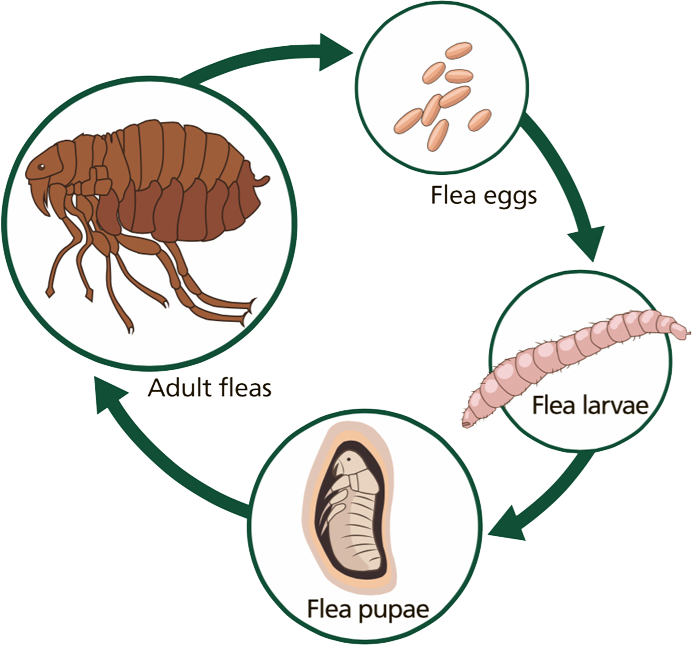Pet owners may notice the following signs and symptoms, which could indicate that their pet is infected with fleas, ticks or worms:
Fleas: Fleas cause itching, so the pet may chew and lick at their fur. The skin may be red or inflamed. Signs of fleas include small, black droppings or sightings of the actual fleas. Some animals may groom excessively and can experience skin diseases. Puppies, kittens, or animals with a particularly large flea infestation may be affected with anaemia. Signs of a home infestation include sightings and flea bites.
Tick: A tick may be seen against the animal’s skin, or felt as a small bump in their fur. The mouthparts of the tick will be buried. The tick may be hidden in areas such as the ears, between the claws on the paws, tail area or between the front legs. Pets should be checked thoroughly, starting at the head and using the fingers like a comb (or use a comb if the fur-type allows) but stopping if a bump is discovered to check whether it is a tick. The pet may lick an area where a tick has attached itself.
Worms: Animals infected with intestinal worms may have no signs at all, or they may experience: a reduced appetite; diarrhoea; vomiting; weight loss; abdominal distension; or signs of worm segments around the bottom/worms in their faeces.
Flea life cycle

Flea eggs – a flea can lay up to 50 eggs a day.
Flea larvae – these feed in dark areas, like cracks in the floor, carpets or bedding.
Flea pupae – a cocoon where they fully develop (this can be many months).
Adult fleas – hatch and jump onto a suitable host.
In the right conditions, the cycle can complete in 14-21 days. Only five per cent of the flea population is adult fleas.
